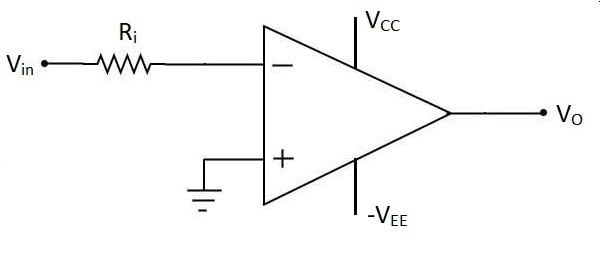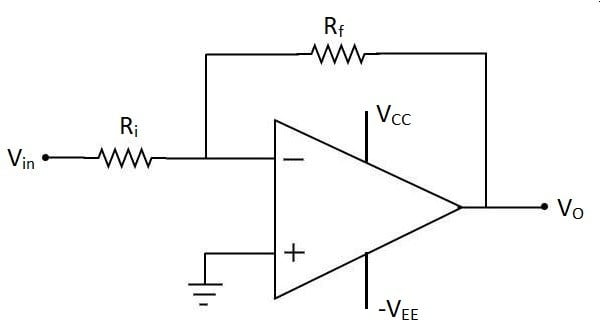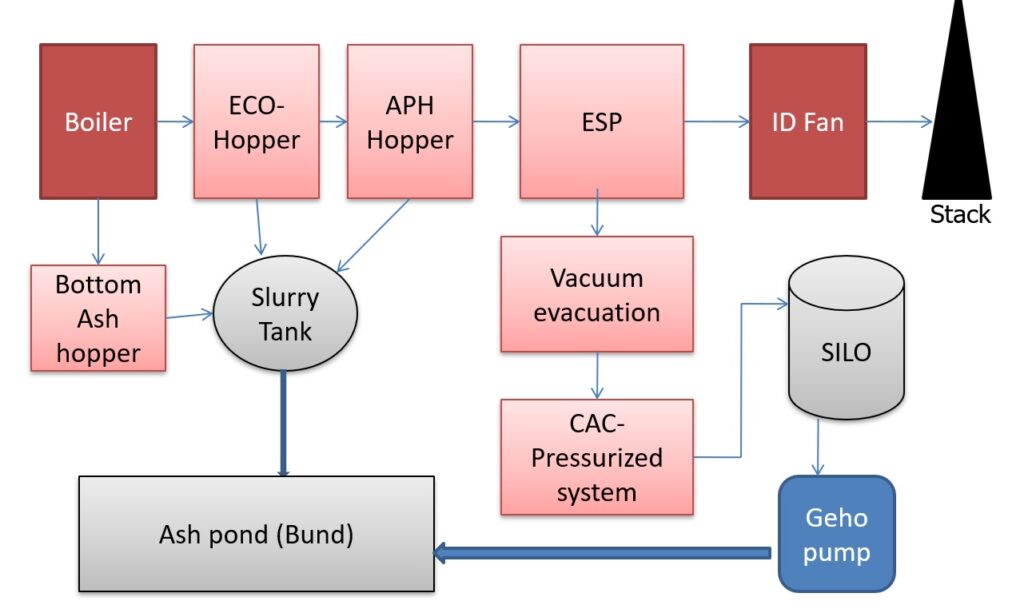Table of Contents
ToggleConfiguration of op-amp means the ways in which an op-amp is connected in circuit. Based on the connection, the op-amp can work in two different modes.
1. Open loop mode
2. Closed loop mode
Open Loop Configuration of Op-amp
When no part of output is connected to input, it is known as open loop configuration. It means that there is absolutely no feedback present from output to Input.
Following figure shows an open loop configuration of op-amp.

Input signals V1 and V2 are applied to non-inverting and inverting terminal respectively.
Differential Input voltage (Vid) is the difference between the voltages applied at non-inverting and inverting terminals.
Therefore it is,
Vid = (V1-V2)
Output voltage is given by,
Vo=Av . Vid
∴ Vo = Av (V1-V2)
Where,
Av is the open loop gain gain of the op-amp. Ideally open loop gain is infinite but practically it’s value is very high.
As AV is very high, a small value of Vid will drive the Op-amp into positive or negative saturation.
∴ Vo = ± Vsat
When the output voltage of the circuit exceeds the possible range, the op-amp is said to saturate. It just provides its maximum or minimum possible voltage.
Depending on the polarity of Vid, the output voltage is equal to +Vsat or –Vsat.
Means, If Vid is positive then the output of op-amp is positive saturation. Also, if Vid is negative, the output of op-amp is negative saturation.
A very small value of differential input voltage will drive the op-amp into positive or negative saturation. Therefore the output voltage is not proportional to differential input voltage. Hence open loop configuration is not used for linear amplification.
Closed Loop Configuration of Op-amp
When a part of output is connected to (or fed back to) the input, it is called as closed loop configuration. It means that, some kind of feedback is present in the circuit.
Types of feedback
- Positive feedback or regenerative feedback
- Negative feedback or degenerative feedback
Positive Feedback
In positive feedback, the feedback signal and the original input signal are in phase with each.
Here, the feedback is present between non-inverting terminal (+) through resistor Rf.
It is used in oscillators and Schmitt triggers.
Negative Feedback
If the feedback signal and the original input signal are 180° out of phase, then it is called as negative feedback.
Here the feedback is present between output and inverting terminal (-) through resistor Rf. Negative feedback is used in almost every circuit (except few) using op-amp.
For example, circuits like inverting op-amp, adder, subtractor and integrator use negative feedback.
Following fugure shows the negative feedback through a resistance Rf . It is a closed loop configuration of Op-amp.

Advantages of Negative Feedback
- Reduces the distortion.
- Reduces and stabilizes the gain.
- Increases the bandwidth.
- Changes values of input and output resistance.
- Reduces the effects of variations in temperature and supply voltage on the output of Op-amp.
Comparison of Open Loop and Closed Loop
Following table shows the comparison between open loop configuration and closed loop configuration of op-amp.
Sr. No. | Parameter | Open Loop | Closed Loop |
1 | Type of feedback | No feedback | Positive or negative feedback |
2 | Voltage gain | Very high | Low |
3 | Input resistance | Very high | Depends on the circuit |
4 | Output resistance | Low | Very low |
5 | Bandwidth | High | Very high |
6 | Drawback | Waveform distortion | Low gain |
7 | Configuration | Differential, Inverting, Non-inverting | Inverting, Non-inverting, Summing |
8 | Application | Comparator | Amplifier, Oscillator |



To the electronicsforyou.in admin, Thanks for the well-researched and well-written post!
Hello electronicsforyou.in admin, Your posts are always well organized and easy to understand.